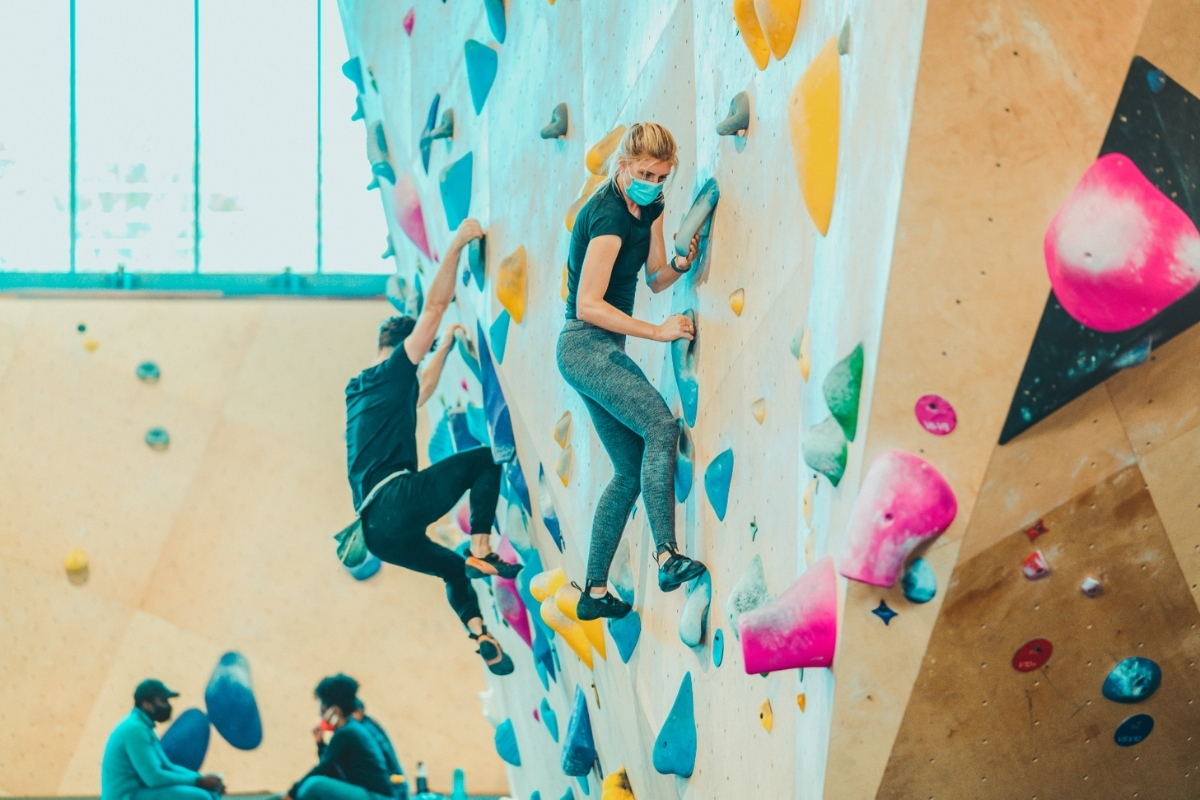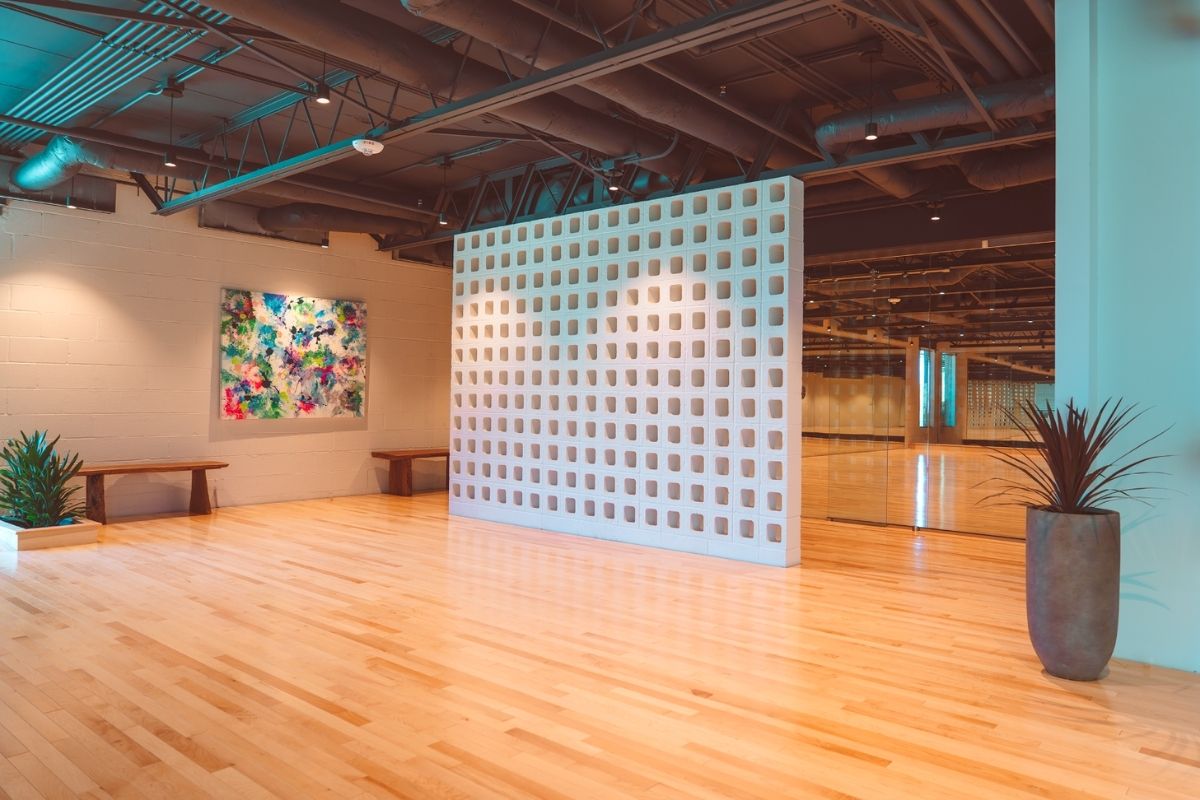Member Spotlight: Oso Climbing Gyms

2020 will forever be seared into our collective memory as the year COVID-19 ravaged the country and the world. Yet, when most businesses were bunkering down to ride out the storm, Oso Climbing Gyms took a gamble and opened its doors for the first time last May.
I connected with Oso's Founder, Chris Whittaker, to learn about the surprising success story of launching a climbing gym during such tumultuous times.
Alexandra Wojcicki: What was it like making the decision to open your business in the early pandemic climate?
Chris Whittaker: Being born in the pandemic has very few privileges, but one of them is that we were born with cleanliness and safety in mind. This is part of our ethos. Many general COVID-19 health and safety insights that we take for granted now (it’s not really a virus that spreads via surface contact, etc.) were not available yet when we were opening.
Texas was one of the first places in the country to open gyms, and with that in mind – there was no playbook for what we were supposed to do. Oso had a massive party planned for opening day, but those plans needed to be scrapped.
We opened up to less than 200 people, spaced out over multiple climbing windows, and only allowed 30 people in the space at a time, socially distanced. We had no members when we opened.
It was an interesting moment for us, but we just said, look – we’re going to design these policies really thoughtfully, we’re going to over-index in customer safety. Going forward, this is the baseline. We will only get better.
Alexandra: How did you go about keeping staff and visitors safe in those early days?
Chris: We had a completely new staff that we were training and developing, but everyone bought into the vision of what we could do to keep the place safe very early on.
We had already thought through spacing in the building, built really high ceilings, and included lots of ventilation and great AC systems. We looked at what chemicals were able to kill coronavirus strains that circulated in the 90s and might work again and decided to get a bunch of those chemicals.
The traditional channels just weren’t selling them at the time, so I went to a local carpet cleaning company who bulk produces basically any chemical you want, and I asked “Hey, can you make specific things for me?” and they were able to supply us with what we needed. We found a different company that realized they could import supplies, and we were getting rubber gloves from South Korea.
Storing this type of PPE was crucial to make sure that we could protect the staff. It was vital to have masks available for customers, because at that point many people still didn’t have masks, and we made the conscious choice not to sell PPE unless it was directly supporting local artists in the community. For general PPE, we wanted to give it all away to our patrons, it’s a way to show up for our community.

We also taught staff how to talk about masking policies, because when we opened many people still didn’t even realize what was going on. How do have your staff members talk to someone who is 20 years their senior about why it is important to wear a mask? That type of training went a long way, and our operations team really excelled at it.
Alexandra: What are some of the precautions that evolved over time?
Chris: To further protect staff and visitors, we developed a no-questions-asked policy about sick days. If you’re an hourly employee and you don’t feel well for any reason before your shift starts, just call us and let us know. We encourage you to stay home, and still pay you for the day. People warned us that a policy like that would be ripe for abuse, but we haven’t seen any of that. The most important thing to our team is keeping everyone safe.
Another big question when we opened was, do we ban powdered chalk? Meeting people where they’re at is likely to be successful, and there is a behavior that we could leverage. Folks are thinking about improving their grip when they’re on the wall. So, we bottled a bunch of 70% ethanol solution, put it on the ground, and marked it as both hand sanitizer AND climbing grip improver.
We told folks as they came in, “Hey, spray this on your hands before you chalk up between climbs! It’s the missing component in liquid chalk – it turns the chalk on your hands clear for a moment and then turns white again. You don’t lose any chalk, but it actually dries your hands out before your climb, which is what you want.”
When we started teaching people that it was a grip improver in addition to a hand sanitizer, people started taking that seriously and adopted the practice. This feature is something that will not go away after the pandemic is over – it’s now a built-in norm for us.
Alexandra: What is Oso Climbing Gyms’ origin story? Any advice for prospective owners?
Chris: We started Oso Climbing Gyms in the 2nd bedroom of my apartment. We cleared out the guest room and put some desks in there. It’s very much the startup story of a couple friends sitting in an office trying to bang our heads against the wall until something good came out.
For a new gym operator, you need to come in with eyes wide open. There’s a tremendous amount of work, a lot of risk – the word entrepreneur was introduced to English with the meaning “bearer of risk” when it originated from the French language.
The lows of being an entrepreneur are far lower than in any other professional career – but the highs are also much higher.
For us, it was all worth it, 100%. As a gym owner, you have the opportunity to shape local indoor climbing culture into what you would like it to be. That starts from the top, in how you conduct yourself, your team, and your organization. You make hard decisions on a regular basis, and you have to be very morals and values driven. As you do that, people take notice.
Alexandra: How did your team go about designing the space and choosing a wall builder?
Chris: Our architect did a wonderful job designing the facility. We ended up building our walls with Vertical Solutions.
Their operations teams are fantastic. I was extremely impressed by the quality of their folks on the ground. I highly encourage others to work with them! Their walls are unique and have a very cool aesthetic. They had an excellent grasp of our vision for the space.
We worked closely with two design partners on the wall shapes themselves, and then Vertical Solutions and their team helped us figure out how we could make that vision possible.

Alexandra: What does it mean to Oso Climbing Gyms to be a CWA member?
Chris: The main benefits of the role the CWA plays right now are networking, disseminating education to members, and advocating on behalf of members and the industry. You have an amazing ability to connect a bunch of very disparate people that have a shared passion and interest in growing the climbing community and enabling those relationships to develop.
One of the best things that the CWA does is the CWA Summit. Getting to meet and to learn from other people in the space is such a valuable part of membership.
We’re also a very new industry overall. From that standpoint, we still don’t have a lot of data. Everybody is still kind of trying their own thing. The climbing industry is a lot more like a collective of craft breweries than we are, say, an Anheuser-Busch. Because of that, the CWA gets to set the tone and help educate operators and share the lessons across broader groups. Helping people access those lessons helps move the indoor climbing industry forward significantly.
Chris is happy to talk to other indoor climbing gym operators about specific approaches that Oso Climbing Gyms took to secure safety for their staff and patrons, or lessons that were learned along the way. Do you have questions? Reach out to contact@climboso.com.
About Alexandra Wojcicki
 Alexandra Wojcicki is the Membership Manager at the Climbing Wall Association. She has a decade of experience working with nonprofit organizations on building member programs, managing partnerships, fundraising, and marketing. A Northern Virginia native, she is now based in Boulder, Colorado, as an enthusiastic climber, backpacker, camper, and traveler.
Alexandra Wojcicki is the Membership Manager at the Climbing Wall Association. She has a decade of experience working with nonprofit organizations on building member programs, managing partnerships, fundraising, and marketing. A Northern Virginia native, she is now based in Boulder, Colorado, as an enthusiastic climber, backpacker, camper, and traveler.
